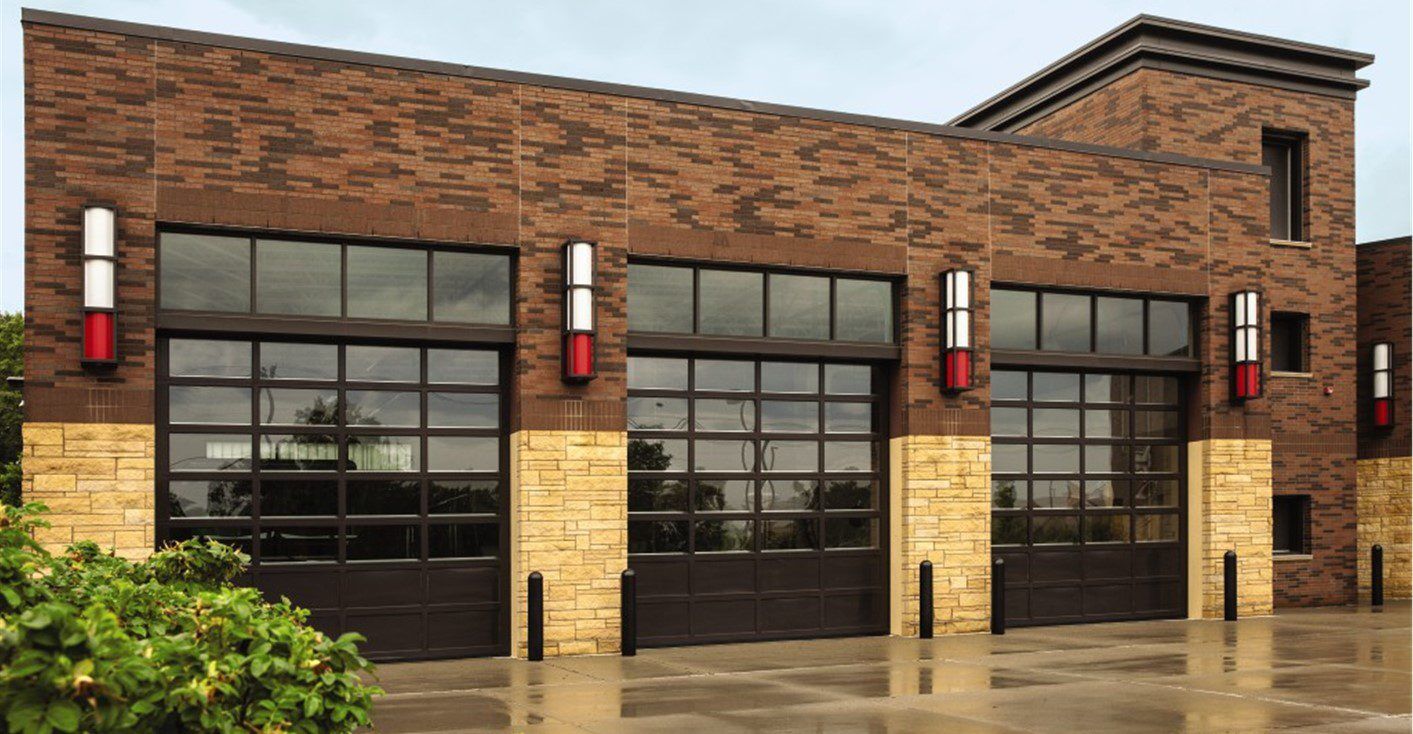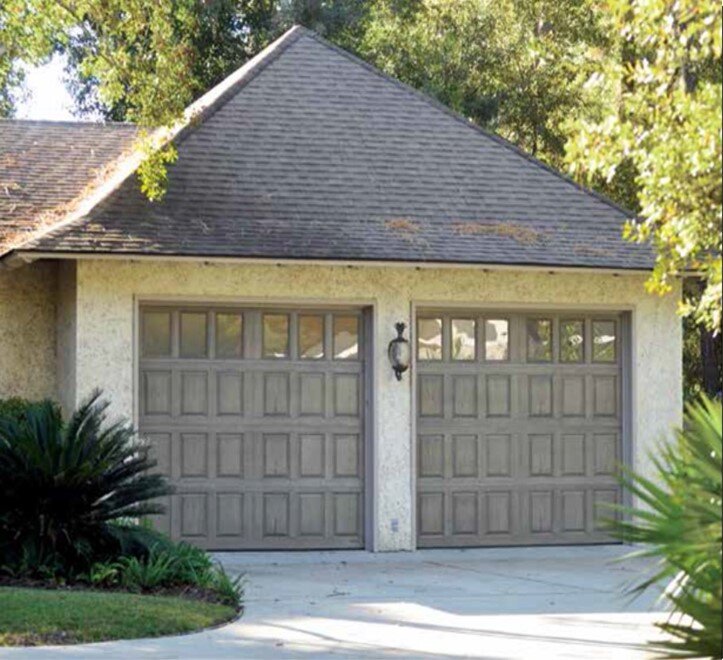Garage Door Safety
Your garage door is the largest appliance in your house. With a properly installed garage door system, regular maintenance, and an understanding of Garage Door Safety Tips, your garage door and opener can provide years of safe, secure, and trouble-free operation.

Garage Door Safety Tips
Considering people use their garage doors at home and work daily, the assumption is that these doors are not dangerous. However, in a business setting, these doors are very heavy, significantly larger and higher up, and have different safety features than residential garage doors. You can take several important safety precautions to prevent accidents and injuries from commercial and residential garage doors.
Garage Door Safety & Care
Mount the garage door opener control button out of the reach of small children (at least five feet from the floor) and where you have a clear view of the door.
Do not let children play with garage door remote controls; explain that the remote controls are not toys.
Set a good example for children and discuss garage door safety with them; explain how to operate the door safely.
Test your garage door opener’s reversing mechanism monthly by placing a 2 x 4 board in the door’s path. Call us for repair if the door does not reverse after contacting the object.
Know how to use your garage door opener’s emergency release feature. Your owner’s manual provides instructions.
Visually inspect your garage door each month. Look at the springs, cables, rollers, and pulleys for signs of wear. If any of these components appear damaged, contact us to schedule an inspection, maintenance, or repair service.
Do not attempt to repair cables or springs. These parts are under high tension and require special tools for adjustment. Improper handling or disconnection can cause breakage and serious injury.
To avoid damage to your door and/or opener, disable and/or remove any door locks, ropes, and/or cables before operating your opener.
Use the garage door opener’s release mechanism to open the door manually using interior or exterior lift handles. The door should lift smoothly with little resistance and stay open around three or four feet above the floor. If it is difficult to perform this task, your door may be out of balance, causing premature wear. Call an authorized Overhead Door Ribbon® distributor at 1-800-929-3667 for adjustment.
To prevent accidents when a garage door closes, invest in a garage door opener that features photoelectric eye safety beams mounted a few inches off the floor and sends an invisible beam across the door’s path. If the invisible beam is broken, the garage door will automatically reverse to its fully open position. The invisible beam provides added safety to the auto reverse mechanism, as the door does not have to contact an object to reverse. The Safe-T-Beam® is a standard feature on all Overhead Door™ brand garage door openers.
Garage Door Inspection
We encourage you to have your garage door system professionally inspected to ensure everything is working as it should. Your garage door inspection should include the following:
- Carefully inspect the entire counterbalance spring system, including springs, cables, and attached hardware.
- Careful inspection of all hardware attachments, including hinges, top brackets, and rollers
- Lubrication of the above appropriate parts.
- Testing of the reversing mechanism on your garage door opener.
- Inspect the opener, including necessary adjustments to limit switches and lubrication of appropriate parts.
- Avoid Breakdowns & Repairs with Proper Garage Door Safety & Maintenance.
Garage Door Security:
While on vacation or away from home for extended periods, unplug the garage door opener unit or use a vacation lock on the wall console switch, an optional accessory on Overhead Door® garage door openers.
Consider purchasing a garage door opener with rolling code technology, which changes the access codes each time the transmitter is used.
Overhead Door™ CodeDodger® has been incorporated as a standard feature into our full line of openers since 1995.
Wireless keypads, which activate the garage door opener with a personal identification number (PIN), are available for Overhead Door™ garage door openers. This allows family members to open the door without a key or remote. Never disclose the PIN or leave it written down.
Never leave the remote control in the car or with a parking attendant. It should be treated like a house key.
Always lock the door from the garage to the inside of your home for greater safety and security.
Check to ensure your garage door is closed when you lock your entry doors at night.
Commercial Tips
Instead of hoping everyone exercises common sense, leave nothing to chance and institute strict overhead door operation rules.
Here are some key tips a business should follow:
- Do not stand or walk under a moving door.
- Watch the door until it has finished opening/closing.
- Never leave a door partially open.
- Keep the floor space around the doors open and navigable.
- Do not operate an overhead door while under the influence.
- Wear the proper protective gear when working around overhead doors.
Train your employees
Limit the use of your property’s garage doors to employees who have sufficient training and experience. Others can only use them under close supervision. Making new employees operate the doors with someone watching them might feel silly, but safety is more important than pride.
Implement a detailed training program to ensure your staff knows the best practices for garage door operation.
- Proper vs. improper use
- Accident statistics
- Risk assessments
8 Tips for Loading Dock Safety
Mark floors with tape to identify where walking is off-limits. A common hazard at loading docks is employees being hit by forklifts or other heavy machinery. Marking on the floor where walking is safe will prevent unwanted injury.
Use visual dock communication. Traditional red/green light signals alert trucks to enter and when it is necessary to stop. This is an effective way to communicate with drivers at the loading dock and ensure no accidents occur.
Use locking devices on every truck that comes to the loading dock. This ensures that the trailer will not accidentally separate from the dock. People will likely fall off the dock when separation occurs, and injury can happen.
Clean area regularly. As mentioned above, a common hazard is slipping or tripping due to weather, spillage, or debris left on the floor. Cleaning the area on a regular schedule will decrease the amount of slips, trips, and falls.
Put padding on the edges of sharp corners on the loading dock. Moving product from the truck into the facility can run into uncovered sharp edges and cause injury. Protective padding on edges and corners can easily prevent this.
Secure loose products. Before moving the product to or from the truck, ensure it is secure. Smaller products can fall off and cause tripping, and if more oversized products are unsafe, they can injure employees when being lifted.
Require that all workers are well-informed and follow loading dock safety rules. To ensure all employees know the risks, hazards, and best practices, they must take a short course to learn the appropriate protocols and guidelines for working on a loading dock.
Only OSHA-trained and authorized employees can operate heavy machinery. This ensures everybody’s safety and abides by the law.
Call us Today at (858) 264-3650
Overhead Door Company of Southern California™ – 12215 Kirkham Road Suite 200, Poway, CA 92064
Call Us Today at (858) 264-3650
Or Email us on the Form Below.
Business Hours: Monday – Friday 7 AM–4 PM
Call us Today at
(858) 264-3650
Or Send us an Email.

